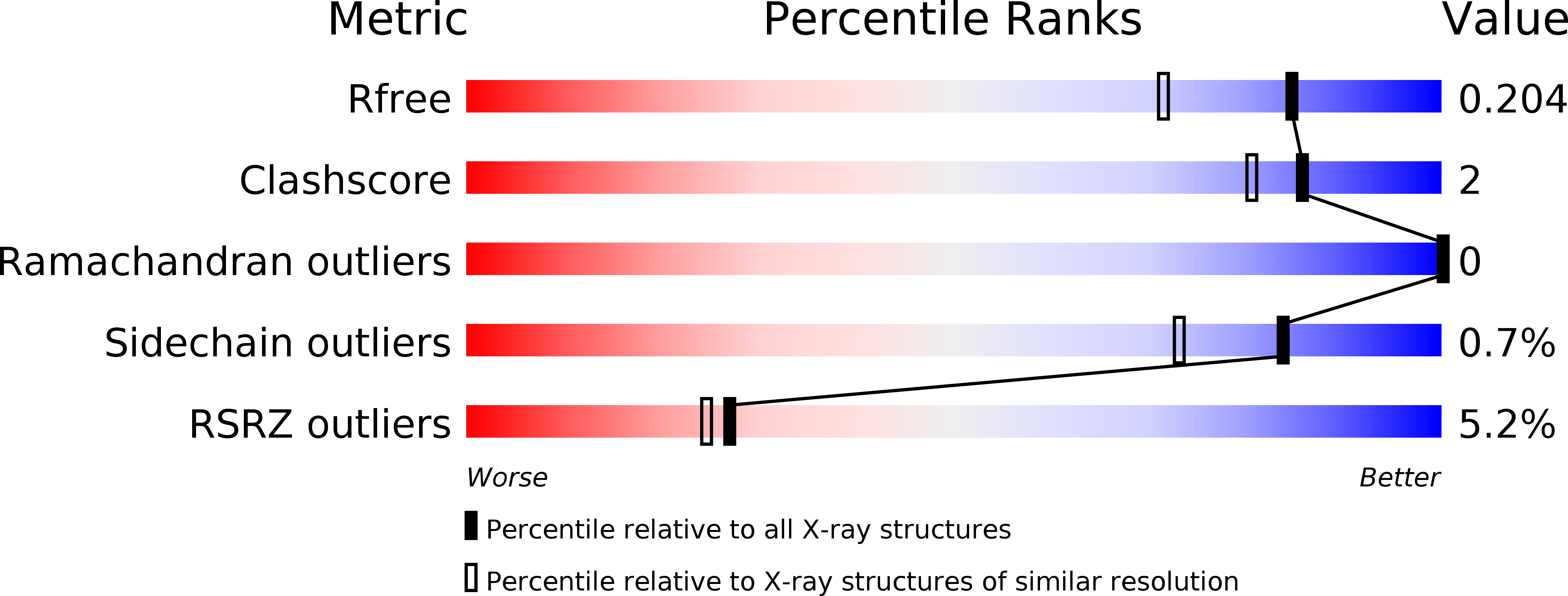
Deposition Date
2018-01-08
Release Date
2019-01-16
Last Version Date
2024-03-13
Entry Detail
PDB ID:
6C2C
Keywords:
Title:
The molecular basis for the functional evolution of an organophosphate hydrolysing enzyme
Biological Source:
Source Organism:
Pseudomonas sp. (Taxon ID: 306)
Host Organism:
Method Details:
Experimental Method:
Resolution:
1.60 Å
R-Value Free:
0.20
R-Value Work:
0.17
R-Value Observed:
0.17
Space Group:
P 21 21 21


